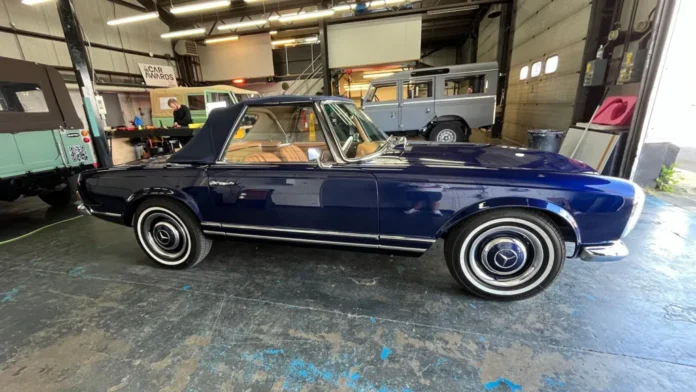From Paul Clifton at BBC:
“A company is converting classic Land Rovers and Porsches to electric power to make more sustainable vehicles.
Older cars increasingly cannot drive in city centre low-emission zones, but Everrati, based in Upper Heyford, Oxfordshire, is removing petrol engines and mechanical drivetrains built more than half a century ago and replacing them with batteries.
“Creating a brand new car uses up to 20 tonnes of CO2,” founder and chief executive Justin Lunny told me.
“A car made 60 years ago is hugely sustainable,” he added.
Each car is built to order and does not come cheap. A good Pagoda sells for about £200,000 at classic car auctions. A customer pays Everrati about £330,000 to replace the engine with a battery, and restore every part of the vehicle to as-new showroom condition.
“It’s not for everybody,” Mr Lunny admitted. “It’s very expensive. But we’re creating something that will hopefully last a lifetime.
Because it is battery-powered, it has more performance now than when the original petrol car was built. It has a smaller range than a modern mass-produced car, and it charges more slowly too.
There are no seatbelts, no airbags or traction control. But it will be fitted with air conditioning to suit today’s clients. Such luxury was not available 60 years ago.
The car is no motorway mile-muncher. It is more likely to be seen in Instagram poses outside fashionable restaurants or summer parties than on a touring holiday.
With a total price tag above £500,000, this is a niche market. Most will be sold in North America and the Middle East.
Mr. Lunny believes he could build 100 cars a year with his 20 staff. Beyond that, the ambition is to sell his bespoke battery and drivetrain technology to other carmakers.”

So… Who is This For?
A classic car upcycled and updated into a fully electric vehicle is quite a project, and something that many people would be thrilled to own. But Mr. Lunny said it himself- “this is not for everyone”. At nearly $700,000USD per car, this is an item for the ultra wealthy only. And while it carries the positive message of reducing emissions and recycling older vehicles, this cost is so high that it could never make a real difference in offsetting negative human impacts from fossil fuels. So again, who is this for? The target audience may be buying these to show off how much they care about the environment, but it’s far more likely just a cool toy to show off to their other rich friends. If they truly cared, that $700,000 could go towards advancing the practice of EV’s or clearing existing emissions or just about anything else.




